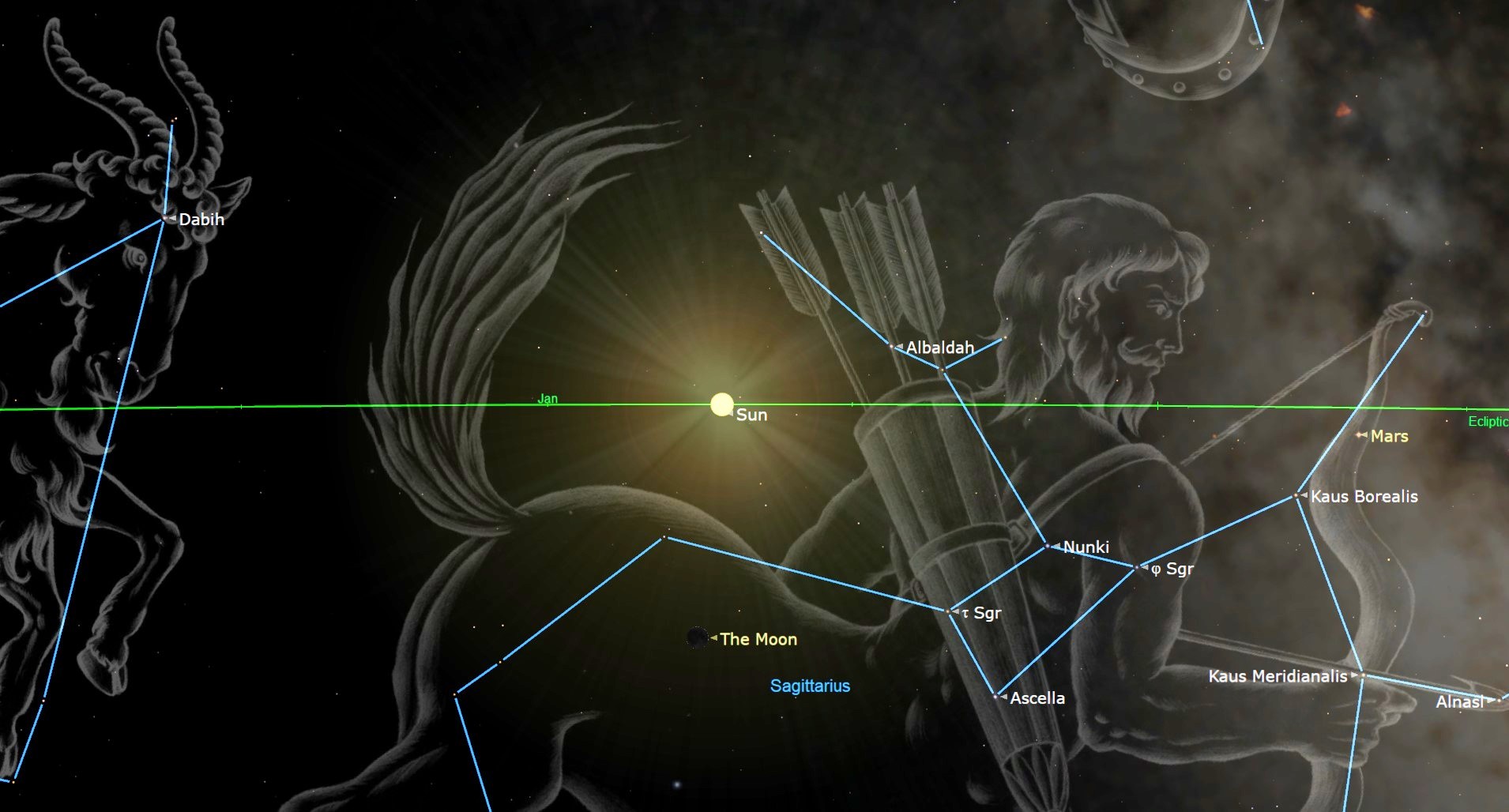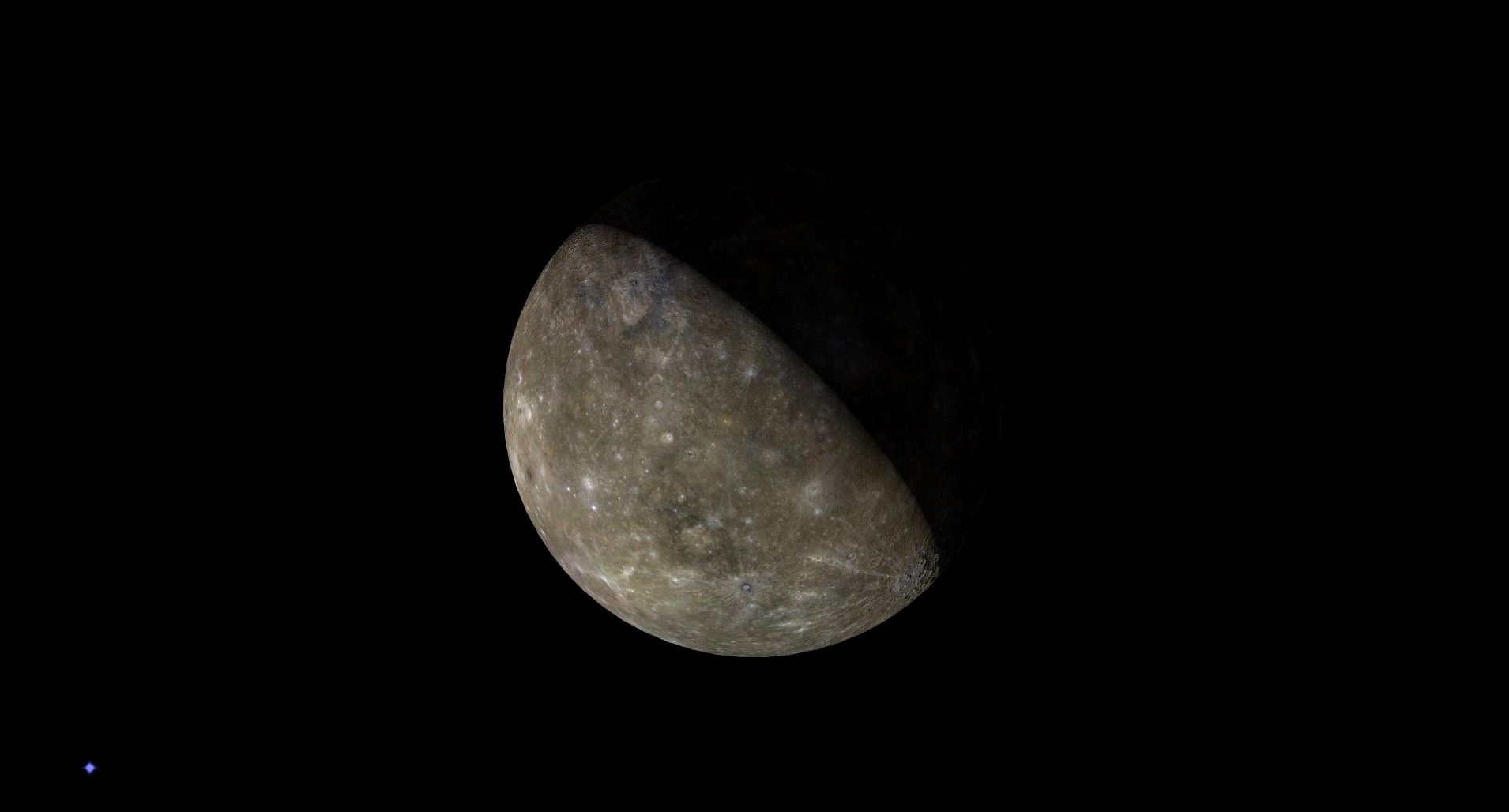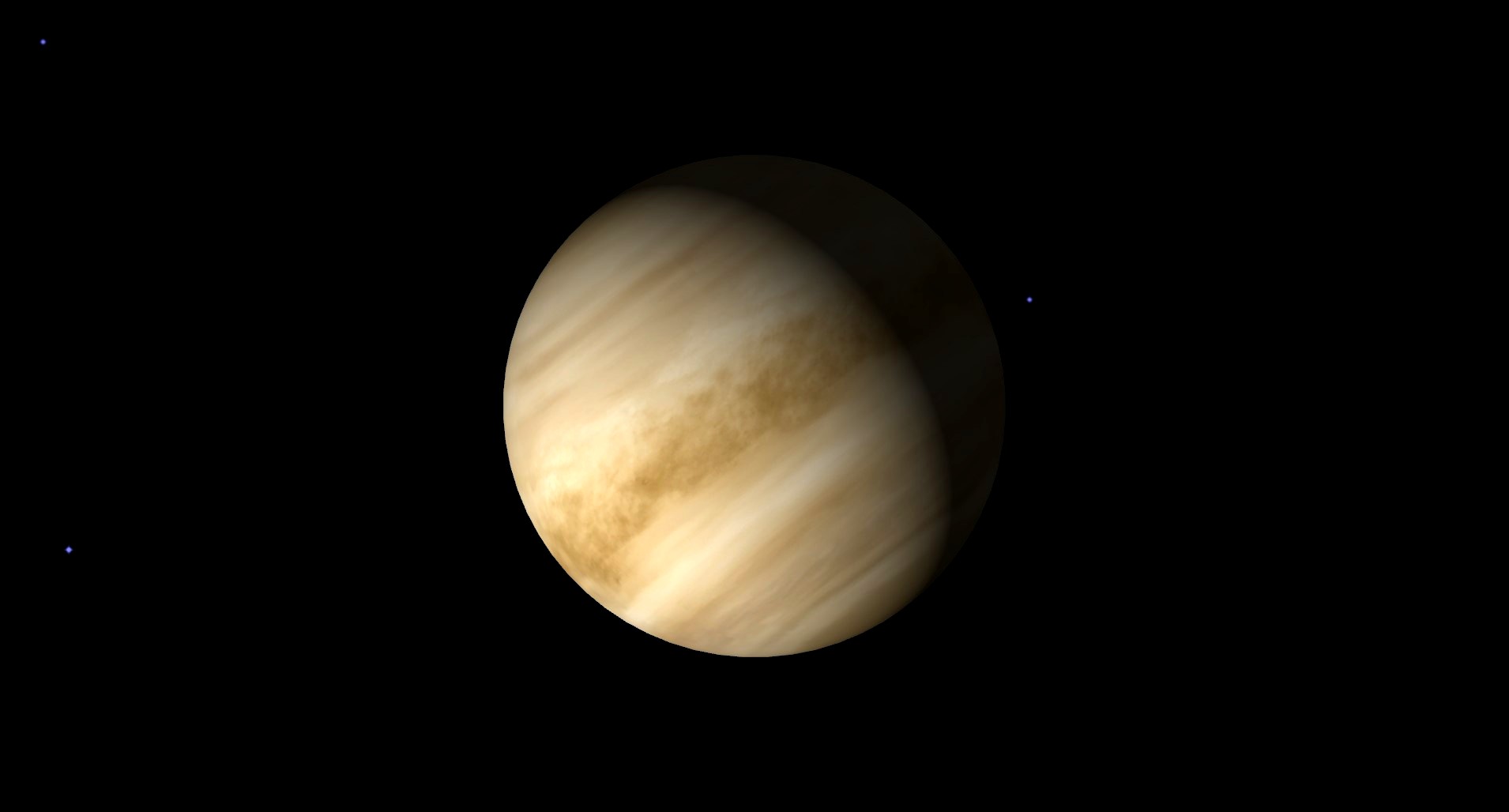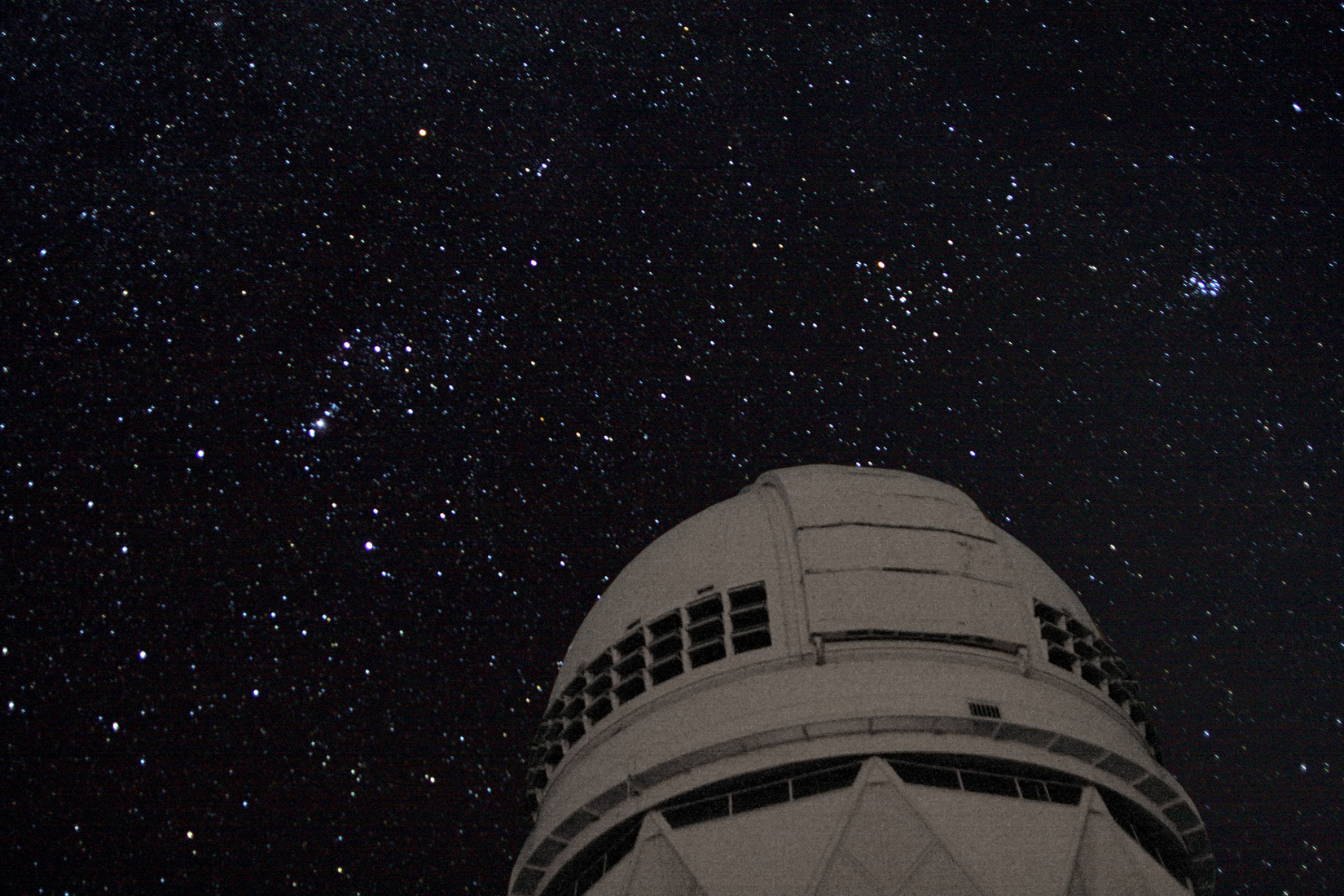January's new moon welcomes Mercury as a 'morning star'
Mercury will still be hard to see, but one can use bright Venus to find it.

The new moon of January will be at 6:57 a.m. Eastern Time on January 11, according to the U.S. Naval Observatory, and a day later the planet Mercury will reach its greatest westward separation from the sun, showing itself as a "morning star."
New moons happen when the sun and moon share the same celestial longitude, a position also called conjunction. At new phase, you can't see the moon from Earth because the illuminated side is facing away from us.
New moons are only visible during solar eclipses; The only way to see the new moon is when it passes in front of the sun, causing a solar eclipse, which isn't happening this month (the next one is slated for April 8).
Related: New moon calendar 2024: When is the next new moon?
Visible Planets

Looking for a telescope to see the planets of the solar system up close? We recommend the Celestron Astro Fi 102 as the top pick in our best beginner's telescope guide.
The day after the new moon (Jan. 12), the sun rises at 7:19 a.m. Eastern Time in New York. Mercury rises at 5:40 a.m., so by 7 a.m. it will be about 12 degrees high in the southeast. The planet reaches greatest western elongation that afternoon at 2:18 p.m., according to skywatching site In-the-Sky.org. Mercury will still be hard to see, but one can use Venus, which will be about 19 degrees high, to find it.
Venus is the single brightest star-like object in the sky, and it will be above and to the right of Mercury, which is fainter and only just visible as the sky starts to get light. One should try to spot Mercury as soon as possible after it rises, since the brightening sky will make it harder to see as sunrise approaches.
As one goes southwards the observing prospects for Mercury improve because the angle of Mercury's orbit (as viewed from Earth) with the horizon gets steeper. If one is in Miami, for example, Mercury rises at 5:29 a.m. and by sunrise, which is at 7:09 a.m., Mercury is a full 18 degrees high. The innermost planet won't be visible at that point as the sky is too bright, but by 6:30 a.m. it will be about 12 degrees above the southeastern horizon.
Get the Space.com Newsletter
Breaking space news, the latest updates on rocket launches, skywatching events and more!

The best observing prospects are near the equator. In Quito, sunrise on Jan 12 is at 6:15 a.m. and Mercury rises at 4:38 a.m. local time. By sunrise it is a full 23 degrees high in the southeast, and a half hour before sunrise at 5:45 a.m. Mercury is 15 degrees high. As one moves into the Southern Hemisphere the planet's elevation will decrease again; in Buenos Aires, the planet rises at 4:13 a.m., with sunrise at 5:53 a.m. A half hour before sunrise the planet is about 12 degrees high in the southeast; as in the Northern Hemisphere one can use Venus to find Mercury; Venus, about 22 degrees above the eastern horizon, will be above and to the left of Mercury.
On the day of the new moon, Venus is still a bright morning star, and when the moon is not out it is the last celestial object one can see with the naked eye; it is a distinct, bright star even relatively close to sunrise. Venus rises at 4:45 a.m. on Jan. 11 in New York, with sunrise at 6:49 a.m. By sunrise the planet's altitude is 17 degrees.

As with Mercury, the planet's appears further above the horizon as one approaches the equator and then starts to drop again as one gets into the Southern Hemisphere. In San Juan, Puerto Rico. For example, the planet rises at 4:27 a.m. local time and by sunrise (6:59 a.m.) the planet is a full 30 degrees above the eastern horizon. In Quito the planet rises earlier, at 3:46 a.m., and one would see the planet almost directly above Mercury in the east-southeast. And by sunrise at 6:17 a,m., Venus is 34 degrees above the horizon.
The day of the new moon also is when Mars will start to emerge from the sun's glare in the predawn hours. From New York City (and locations of similar latitude) Mars rises at 6:23 a.m. local time, just 26 minutes before the Sun – count oneself lucky if you can spot it. In more southerly locations Mars rises further ahead of the sun, but not by much; in Quito, for example, the planet rises at 5:12 a.m. local time, but sunrise is at 6:18 a.m., and a half hour before sunrise the planet is only about 8 degrees high. As January progresses the planet will appear further west of the Sun, as the Sun moves eastwards against the background stars, making it more visible and part of a line of three terrestrial (or rocky) planets stretching from the horizon upwards in the predawn hours.
In the evening sky, Jupiter and Saturn are both visible from locations at about 41 degrees North – New York, Chicago, Omaha, or Madrid (Spain) -- in the evening, and both are in the southern half of the sky. By about 6:30 p.m., when the sky is fully dark, Jupiter will be just west of due south, a bright yellow-white "star" about 61 degrees above the horizon. Saturn will be fainter, and much closer to the southwestern horizon as the planet sets at 8:22 p.m. in New York. Jupiter sets at later at 1:34 a.m. on Jan. 12. For Southern Hemisphere sky watchers the situation is similar in the mid-latitudes; in Melbourne, Australia, for example, on the evening of Jan. 11 Saturn sets at 11:05 p.m. local time, and the planet is about 17 degrees high in the west by 9:30 p.m. (sunset in Melbourne is at 8:46 p.m.) with Jupiter 36 degrees above the horizon in the north-northwest. Jupiter is in the northern half of the sky because from the Southern latitudes the sky is "reversed" (though in fact it's just that one is seeing the stars from the opposite side of the equator).
Stars and Constellations
Winter constellations are in full swing for Northern Hemisphere observers in January. By about 6 p.m. Orion, the Hunter, is completely above the Eastern horizon, and one can watch its stars appear as the sky darkens. Orion faces Taurus, which early in the evening is above the Hunter (the constellation is actually to the west and north). One can see the Hyades, a cluster of bright stars that is the "face" of the bull.
Looking left, above Orion's head, one sees Gemini, the Twins, and the two stars Castor and Pollux. Castor is the uppermost of the two stars, as the Twins are on their "side" just after they get above the horizon. North and west of the Twins – above them in the early evening -- is Auriga, the Charioteer. Auriga contains the bright star Capella, which from the latitude of New York City and above never sets – it is one of the circumpolar stars.
By about 9 p.m. on Jan. 21, Canis Major and Canis Minor, the "hunting dogs" of Orion, have both cleared the horizon and are in the southeast. Canis Major is below Orion (to its south) while Canis Minor is to the east (on Orion's right, the observer's left). Canis Major, the Big Dog, contains Sirius, the brightest star in the sky. Looking left and above Sirius one will see Procyon, the brightest star in the Little Dog. Procyon, Sirius and Betelgeuse in Orion form the Winter Triangle asterism that is easy to see even from light-polluted locations in cities and suburbs.
By 11 p.m. Leo the Lion is fully above the horizon; one can spot it by looking for Sirius which by that point is almost due south, and turning to the left (eastwards) and upwards; one will see Procyon to the southeast. Continue left from Procyon and downwards slightly until one is facing nearly eastward; one should be ablw to see Regulus, or Alpha Leonis, also called Cor Leonis, the Heart of the Lion. Continue diagonally towards the horizon and one encounters Denebola, the Lion's tail.
By this time of night Orion is fully "upright" with the Belt stars making a line from east to west angled slightly upwards; it's much easier to see the shape that forms Orion's shoulders and legs. If one looks at the three stars of the Belt, Betelgeuse is the one above and to the left, while Rigel, Orion's foot, is below and to the right. If the local city lights are not too bright one can spot a fainter star just above and to the right of Rigel; this is the start of Eridanus, the River, and the star is called Cursa or Beta Eridani, as it is the second-brightest star in the constellation. Eridanus' brightest star, Achernar, isn't visible at all from north of 33 degrees latitude. In the continental U.S. that means one must be in one of the states along the Gulf Coast, the southern half of Arizona or New Mexico, or San Diego.

For Southern Hemisphere observers, January is when Puppis, Carina and Vela, the three constellations that make up the ship (connected to the Argo, the famous ship of Jason and the Argonauts) are prominent. As it is the austral summer the sun doesn't set until after 8 p.m.; for the sky to get fully dark one must wait until about 9:30 p.m. At that point in the northeastern sky one would see an "upside down" Orion, with the Belt stars above Betelgeuse, which from Melbourne is below and to the right.
Rigel, meanwhile, is upwards and to the left, and this time when one follows the River from Cursa, one goes up a full 62 degrees to a point just west of north to Achernar. If one uses Betelgeuse and Sirius as "pointers," one can draw a line between them southwards (this will be to the right) and above that line is the bright Canopus, the brightest star in Carina, the Ship's Keel, about 52 degrees high and due east. Carina is one of three constellations that make up the legendary Argo, the ship Theseus the hero of Greek legend sailed. Between Canopus and Sirius is a group of seven fainter stars that forms a long shape something like a foot and an ankle; that's Puppis, the Poop Deck. Look just south (to the right) and one can see a ring-shaped group of stars that is Vela, the Sail.
Turning a bit further south – it will be to the right – one can see Crux, the Southern Cross, just between 12 and 17 degrees high in the south-southeast. From the latitude of Melbourne Crux is circumpolar – it never sets. Crux is one of the smallest of the 88 constellations in the sky; at that hour in January it is pointed towards the horizon. If one turns nearly due south one will see Rigil Kentaurus, otherwise known as Alpha Centauri. The Centaur is mostly below the horizon, but by midnight the constellation has almost completely risen.
If you are hoping to catch a look at the planets or anything else in the night sky during new moons, our guides to the best telescopes and best binoculars are a great place to start.
And if you're looking to snap photos of any of these or the night sky in general, check out our guide on how to photograph the moon, how to photograph the planets, as well as our best cameras for astrophotography and best lenses for astrophotography.
Join our Space Forums to keep talking space on the latest missions, night sky and more! And if you have a news tip, correction or comment, let us know at: community@space.com.

Jesse Emspak is a freelance journalist who has contributed to several publications, including Space.com, Scientific American, New Scientist, Smithsonian.com and Undark. He focuses on physics and cool technologies but has been known to write about the odder stories of human health and science as it relates to culture. Jesse has a Master of Arts from the University of California, Berkeley School of Journalism, and a Bachelor of Arts from the University of Rochester. Jesse spent years covering finance and cut his teeth at local newspapers, working local politics and police beats. Jesse likes to stay active and holds a fourth degree black belt in Karate, which just means he now knows how much he has to learn and the importance of good teaching.









